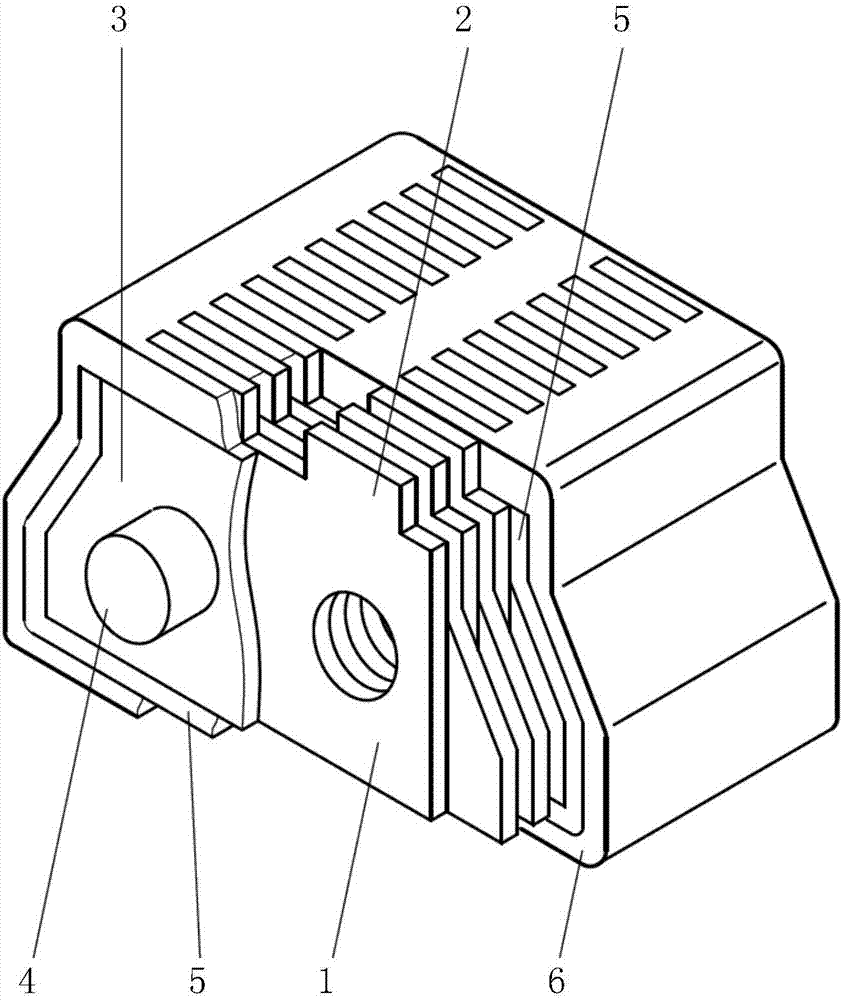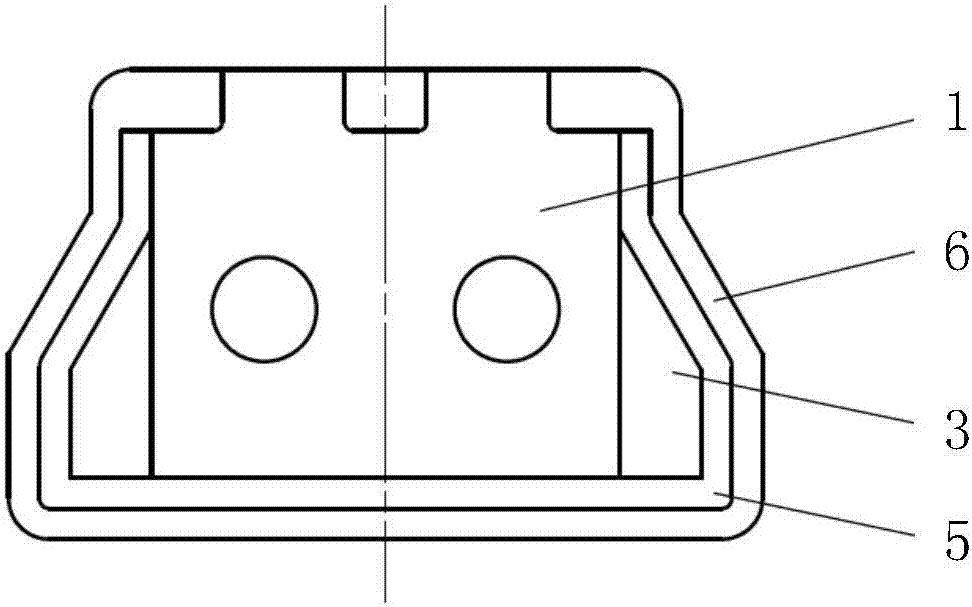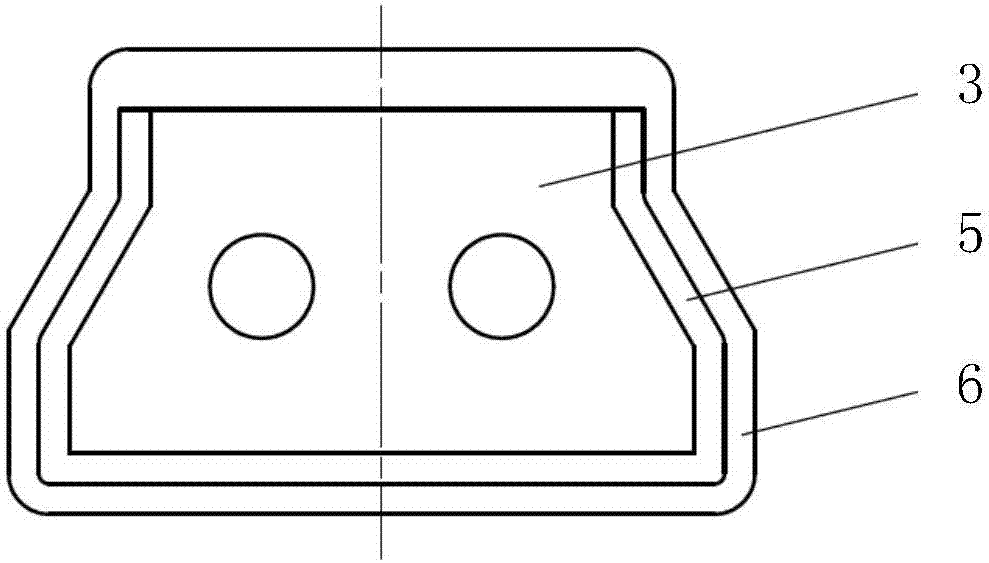Non-woven reinforcement magnetic slot wedge
A technology of magnetic slot wedges and non-woven fabrics, which is applied in the direction of electrical components, electromechanical devices, windings, etc., can solve the problems of reducing generator efficiency, increasing generator temperature rise, and decreasing generator efficiency, so as to reduce stator leakage flux The effect of increasing and enhancing the longitudinal bending strength and reducing the amplitude of air gap harmonics
- Summary
- Abstract
- Description
- Claims
- Application Information
AI Technical Summary
Problems solved by technology
Method used
Image
Examples
specific Embodiment approach
[0014] Specific embodiment: a kind of non-woven reinforced magnetic slot wedge, such as figure 1 , figure 2 , image 3 As shown, the magnetically conductive main body of the slot wedge is formed by stacking the magnetically conductive sheets 1; the magnetically conductive sheet 1 is punched from a silicon steel sheet, and has a rectangular structure with a width smaller than the slot width and a height smaller than the thickness of the slot wedge, and the upper end is exposed to the slot The flange 2 on the wedge top surface has a non-woven fabric pad 3 between adjacent magnetic conductive sheets 1. The non-woven fabric pad 3 is made of carbon fiber non-woven fabric, glass fiber non-woven fabric or other high-strength fiber cloth. The shape is the same as the section of the slot wedge, but the external dimension is smaller than the section of the slot wedge. The magnetic conductive sheet 1 and the non-woven fabric liner 3 have punching holes with the same size and position, ...
PUM
 Login to View More
Login to View More Abstract
Description
Claims
Application Information
 Login to View More
Login to View More - Generate Ideas
- Intellectual Property
- Life Sciences
- Materials
- Tech Scout
- Unparalleled Data Quality
- Higher Quality Content
- 60% Fewer Hallucinations
Browse by: Latest US Patents, China's latest patents, Technical Efficacy Thesaurus, Application Domain, Technology Topic, Popular Technical Reports.
© 2025 PatSnap. All rights reserved.Legal|Privacy policy|Modern Slavery Act Transparency Statement|Sitemap|About US| Contact US: help@patsnap.com



